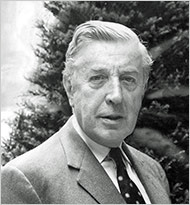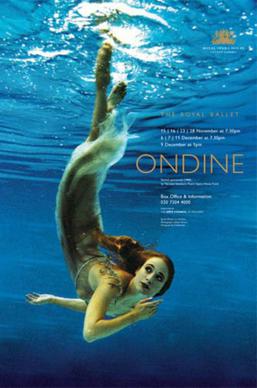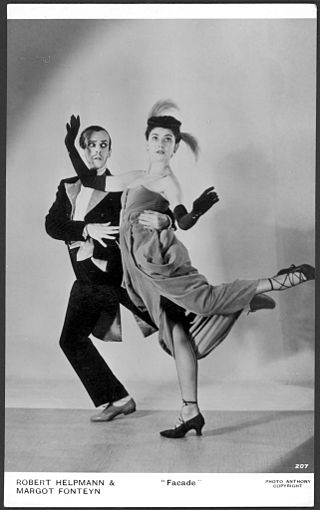References and sources
Related Research Articles

The Faerie Queene is an English epic poem by Edmund Spenser. Books I–III were first published in 1590, then republished in 1596 together with books IV–VI. The Faerie Queene is notable for its form: at over 36,000 lines and over 4,000 stanzas, it is one of the longest poems in the English language; it is also the work in which Spenser invented the verse form known as the Spenserian stanza. On a literal level, the poem follows several knights as a means to examine different virtues, and though the text is primarily an allegorical work, it can be read on several levels of allegory, including as praise of Queen Elizabeth I. In Spenser's "Letter of the Authors", he states that the entire epic poem is "cloudily enwrapped in Allegorical devices", and that the aim of publishing The Faerie Queene was to "fashion a gentleman or noble person in virtuous and gentle discipline".

Sir William Turner Walton was an English composer. During a sixty-year career, he wrote music in several classical genres and styles, from film scores to opera. His best-known works include Façade, the cantata Belshazzar's Feast, the Viola Concerto, the First Symphony, and the British coronation marches Crown Imperial and Orb and Sceptre.

Sir Frederick William Mallandaine Ashton was a British ballet dancer and choreographer. He also worked as a director and choreographer in opera, film and revue.
Vilém Tauský CBE was a Czech conductor and composer who, from the advent of the Second World War, lived and worked in the UK, one of a significant group of émigré composers and musicians who settled there.

Romeo and Juliet, Op. 64, is a ballet by Sergei Prokofiev based on William Shakespeare's play Romeo and Juliet. First composed in 1935, it was substantially revised for its Soviet premiere in early 1940. Prokofiev made from the ballet three orchestral suites and a suite for solo piano.
The Fairy Queen, in English folklore, traditionally ruled the fairies.
Archimago is a sorcerer in The Faerie Queene by Edmund Spenser. In the narrative, he is continually engaged in deceitful magics, as when he makes a false Una to tempt the Red-Cross Knight into lust, and when this fails, conjures another image, of a squire, to deceive the knight into believing that Una was false to him.

Façade is a series of poems by Edith Sitwell, best known as part of Façade – An Entertainment in which the poems are recited over an instrumental accompaniment by William Walton. The poems and the music exist in several versions.
Checkmate is a one act ballet created by the choreographer Ninette de Valois and composer Arthur Bliss. The idea for the ballet was proposed by Bliss, and subsequently produced by de Valois for the Vic-Wells Ballet. It was first performed on 15 June 1937 at the Théâtre des Champs-Élysées, Paris. Checkmate is widely regarded as de Valois' signature ballet and a cornerstone of the British ballet repertoire, being performed regularly by the Royal Ballet and Birmingham Royal Ballet.

Dame Beryl Elizabeth Grey was a British ballet dancer.

Robert Augustine Irving, DFC*, was a British conductor whose reputation was mainly as a ballet conductor.

Ondine is a ballet in three acts created by the choreographer Sir Frederick Ashton and composer Hans Werner Henze. Ashton originally produced Ondine for the Royal Ballet in 1958, with Henze commissioned to produce the original score, published as Undine, which has since been restaged by other choreographers. The ballet was adapted from a novella titled Undine by Friedrich de la Motte Fouqué and it tells the tale of a water nymph who is the object of desire of a young prince named Palemon. The première of the ballet took place at the Royal Opera House, London, on 27 October 1958, with the composer as guest conductor. The first major revival of this Ashton/Henze production took place in 1988.
Horoscope is a ballet created in 1937 by Frederick Ashton with scenery by Sophie Fedorovitch and music by Constant Lambert. It is based on astrological themes, and is reminiscent of Gustav Holst's The Planets in its musical exploration of the mystical.
William Walton's music for the 1944 film Henry V has been arranged by several musicians for non-cinematic performances. The first suite was arranged in 1945 by the conductor Malcolm Sargent. In 1963 Muir Mathieson, who had conducted the music for the original film soundtrack, arranged a longer suite, and in 1988 the musicologist Christopher Palmer constructed an hour-long "Shakespeare Scenario" using most of the music Walton composed for the film.
The Wise Virgins is a one-act ballet based on the biblical Parable of the Ten Virgins. It was created in 1940 with choreography by Frederick Ashton, to a score of music by Johann Sebastian Bach orchestrated by William Walton.

Façade is a ballet by Frederick Ashton, to the music of William Walton; it is a balletic interpretation of items from Façade – an Entertainment (1923) by Walton and Edith Sitwell. The ballet was first given by the Camargo Society at the Cambridge Theatre, on 26 April 1931. It has been regularly revived and restaged all over the world.
Alexis Rassine was a South African ballet dancer who enjoyed his greatest success with the Sadler's Wells Ballet in England in the 1940s and early 1950s. He is remembered as a classical dancer who made "a major contribution to British ballet" during wartime and "helped to keep the flag flying when all about was chaos and disaster."
Mam'zelle Angot is a one-act ballet in three scenes. The choreography and libretto are by Léonide Massine; the music is by Charles Lecocq. The plot is broadly based on Lecocq's 1872 opéra bouffe, La fille de Madame Angot.
Siesta is a short piece for small orchestra, written by William Walton and premiered in 1926. It was later used for a ballet by Frederick Ashton. Walton was a devotee of Italy, and its influence is apparent in this work.
References
- ↑ Kennedy, pp. 329–334
- 1 2 Priory, Hugh (2002). Notes to Naxos CD 8.555868
- ↑ Eliot, Karen. "Starved for Beauty: British Ballet and Public Morale during the Second World War", Dance Chronicle, Vol. 31, no. 2 (2008), pp. 175–210 (subscription required)
- ↑ Morris, pp. 170 and 180
- ↑ Morris, pp. 169 and 171
- ↑ Kennedy, p. 122
- ↑ "A New Sadler's Wells Ballet", The Manchester Guardian, 8 April 1943, p. 4; "The New", The Stage, 8 April 1943, p. 5; "New Ballet", The Tatler, 21 April 1943, p. 10
- 1 2 3 Morris, p. 181
- ↑ Richardson, Philip. "The Sitter Out", The Dancing Times, No. 392, 1943, p. 356, quoted in Morris, p. 183
- ↑ "The Quest", Oxford University Press. Retrieved 6 December 2020
- 1 2 Palmer, Christopher (1990). Notes to Chandos CD CHAN 8871
- ↑ Kennedy, p. 123
- ↑ Kennedy, pp. 123 and 301
- ↑ Kennedy, p. 323
- ↑ Kennedy, pp. 122–123
- ↑ Lloyd-Jones, David (2002). Notes to Naxos CD CD 8.555868
- ↑ Percival, John. "Finding the paradox of Oscar Wilde", The Times, 23 February 1972, p. 11
Sources
- Kennedy, Michael (1989). Portrait of Walton. Oxford: Oxford University Press. ISBN 978-0-19-816705-1.
- Morris, Geraldine (Winter 2008). "Visionary Dances: Ashton's Ballets of the Second World War". Dance Research: The Journal of the Society for Dance Research. 26 (2): 168–188. doi:10.3366/E0264287508000170. JSTOR 40263998. S2CID 191495080.(subscription required)